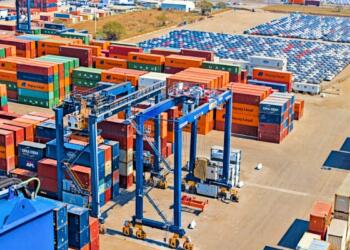 Chaos took over one of the main transportation arteries in Mexico: the Mexico-Querétaro highway, which created a huge parking lot on the road that runs from the Valley of Mexico to Querétaro.
Chaos took over one of the main transportation arteries in Mexico: the Mexico-Querétaro highway, which created a huge parking lot on the road that runs from the Valley of Mexico to Querétaro.
The accident that occurred on the Mexico-Querétaro highway, involving transport units last Wednesday, November 22, exposed the severe deficiencies in the country’s road infrastructure and left a trail of damage for transporters, operators and users, according to various transport businessmen consulted by T21.
This Friday, November 22, regarding the collapse and problems on the Mexico – Querétaro highway, Federal Roads and Bridges of Revenue and Related Services (Capufe) reported that at kilometer 42 of the Mexico – Querétaro Highway, there is a heavy traffic load at the exit of the town of Teoloyucan.
What happened on Wednesday, November 20, caused traffic to be paralyzed for more than 28 hours and generated queues of up to 40 kilometers. It not only highlights the vulnerability of Mexico’s main logistics corridor, but also the lack of alternatives to mitigate the impact.

The chaos faced caused several companies to experience increased costs and decreased productivity. “This situation increased the operating costs of their companies by 10% and reduced the productivity of their units by 20%,” Raúl Monroy Otero, deputy general manager of Transportes Monroy Schiavon (TMS) , told T21 .
Enrique Deschamps, executive director of HH Transportes , spoke on the same topic and highlighted that if you have the opportunity to invoice 11 or 12 trips in a month, with this type of situation you can drop to eight or nine, “that translates into less billing and losing billing increases costs.”
The impact identified by Monroy Otero affects operators, a situation shared by Edgar Martínez Chavero, general director of Transportes Hernie, emphasizing the direct impact on operators.

“They make fewer trips, which means less income for them and for the company. This route is no longer just an operational problem, but an economic burden that affects everyone involved in the logistics chain,” said Martínez.
Faced with this situation, transport companies have had to be close to their customers and look for alternatives to avoid affecting logistics. In the case of Hernie, the viable alternative has been to schedule deliveries further in advance, although Martínez acknowledged that uncertainty persists.
“There is no certainty, and without alternative routes, we remain trapped in a circle. The federal government has not considered anything in the construction of new communication routes,” said Martínez Chavero.
When looking for alternatives, those interviewed agree that they cannot opt for another route, either due to insecurity or operating conditions, “the free route is not an option because insurance does not apply, neither for the units nor for the merchandise on the part of the client , so traveling on those roads would be more complex,” said Deschamps Espino Barros.

Antonio Elola, delegate of the National Chamber of Cargo Transportation (Canacar) in the State of Mexico, addressed another angle of the problem: the saturation in distribution centers. According to him, the lack of agility in unloading contributed significantly to the blockage of road accessories.
“The impact could be reduced if distribution centers streamlined operations to free up waiting trucks sooner, but until that happens, traffic problems continue,” Elola said.
In addition to operating costs, the situation has revealed the country’s infrastructure gap. In this regard, Edgar Martínez stressed that the Mexico City-Laredo and Mexico City-Veracruz corridors, which are key for national and international trade, are no longer sufficient for growing demand.
“These routes function like urban boulevards, with congestion affecting delivery times and costs. Without clear improvement plans from the government, the future of logistics in Mexico looks increasingly complicated,” warned Martínez.
Along these lines, they commented that the impact of the incident on the Mexico-Querétaro highway is measured in lost hours and operating costs, in the frustration of people who depend on these routes for their transportation. The lack of adequate infrastructure and alternative routes poses an urgent challenge for the authorities, whose inaction, according to those interviewed, could lead to an even greater collapse in the logistics system.
T21 consulted Capufe to find out the current situation, and at 12 noon the following was reported: “There is vehicular traffic in both directions of the highway, resulting from an incident that occurred at kilometer 33, but at the moment at that kilometer there is no longer any incident in the direction of Mexico City.”
Meanwhile, in the opposite direction towards Mexico City, the only cargo left is at the Tepotzotlán toll plaza, and so far a line of about nine kilometers has formed,” Capufe reported.
With information from Humberto Cruz and Didier Ramírez.
Images taken from the accounts of X of @JLuisBarradas @elpipila_mx
Comment and follow us on X: @karinaquintero / @Eliseosfield / @DidierRT / @GrupoT21











